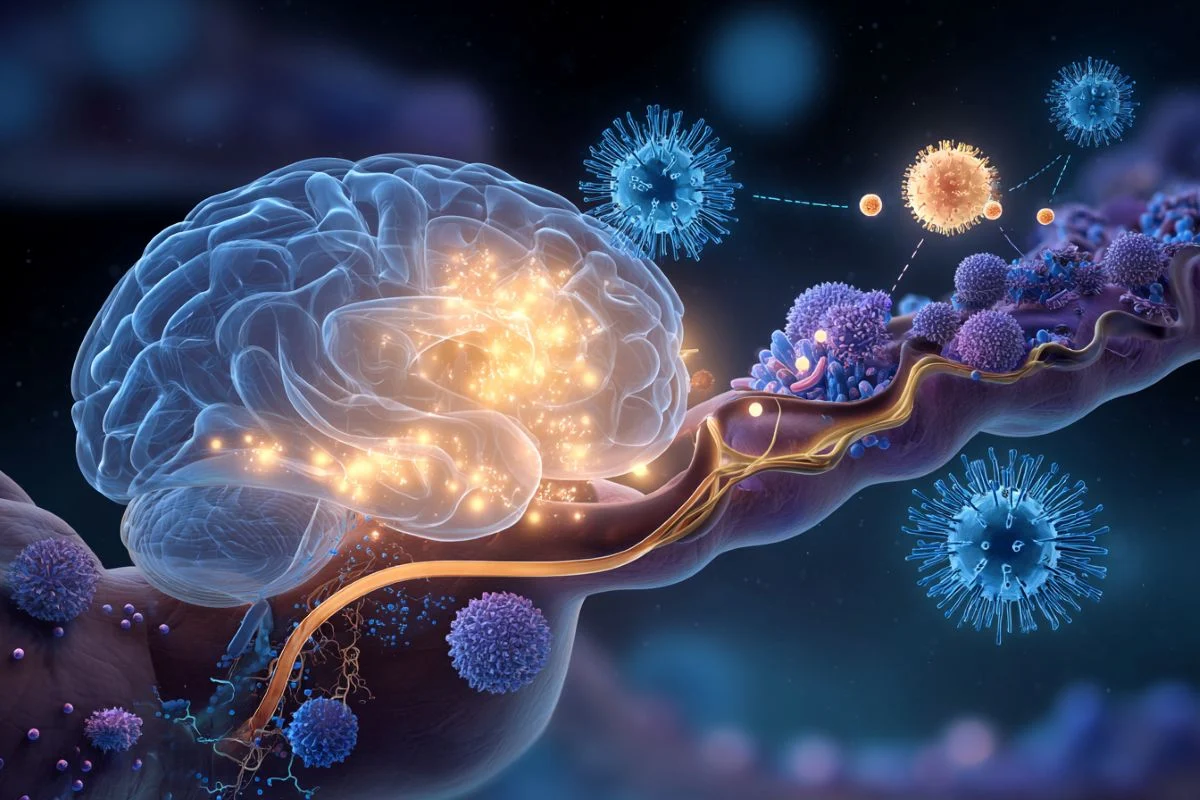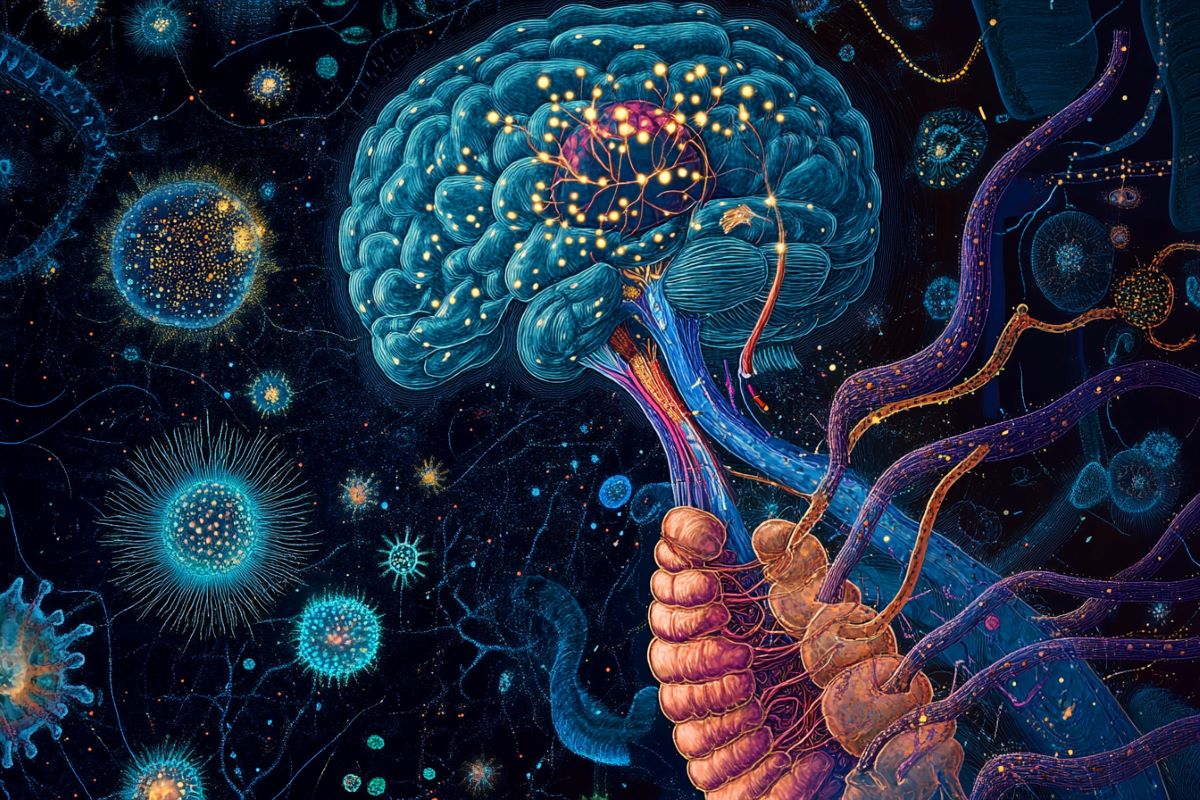Multiple sclerosis is an autoimmune disease for which there is currently no effective treatment. A study of identical twins reveals that certain gut bacteria could trigger it.
Multiple sclerosis (MS) is a complexchronic neurological disease, the origin of which is attributed to the interaction of genetic and environmental factors. In this disease, the immune system attacks the myelin, a substance that surrounds and protects the fibres of the nervous system. The symptoms of the disease vary, depending on where the demyelination occurs, and include visual or sensory disturbances or paralysis.
For years, researchers have suspected that the gut microbiome could play a key role in the onset of the disease. Now, a study published in the journal PNAS provides experimental evidence to support this hypothesis and points to two specific types of bacteria as possible triggers.
Study in twins
The work was based on the study of a group of 81 pairs of twins, in which one of the siblings had developed multiple sclerosis and the other had not. This design minimises confounding factors, as twins are genetically identical and have been exposed to the same environment during childhood and adolescence.
Analysis of faecal samples revealed 51 bacterial species with different abundances between affected and healthy twins. In addition, four of the twin pairs underwent a colonoscopy with samples taken from different sections of the intestine, including the ileum, an area where immune cells with inflammatory potential are concentrated.
Bacteria transplant
Most revealing was the effect of transplanting bacteria from the ileum of twins with multiple sclerosis to the intestines of mice, which developed the disease more frequently than those that received microbiota transplants from healthy twins.
Analysis of the mice that developed the disease showed massive proliferation of two members of the Lachnospiraceae family: Eisenbergiella tayi and Lachnoclostridium sp. These bacteria, which are minority players in humans, expanded disproportionately in the intestines of sick animals and were associated with the onset of brain inflammation and demyelination, characteristic signs of MS.
Interestingly, the phenomenon was observed more frequently in female mice, a finding that recalls the higher prevalence of multiple sclerosis in women. The researchers suggest that hormonal differences could influence the interaction between microbiota and immunity.
Once again, the microbiota
Until now, many studies had described differences in the composition of the microbiome of MS patients compared to healthy controls, but without demonstrating their relevance. This human-animal transfer model provides the first direct evidence that specific bacteria in the ileum can initiate autoimmune processes characteristic of MS.
The finding is important because it suggests that the environmental trigger for the disease could be found in certain bacterial species capable of activating abnormal immune responses. One hypothesis is that these bacteria mimic proteins in myelin (the substance that coats nerve fibres) and confuse the immune system, causing it to attack the body. This is the concept or model of molecular mimicry, which can be applied to numerous autoimmune diseases.
These results add to those of a recent study by the National Centre for Cardiovascular Research (CNIC), which identified imidazole propionate, a substance produced by intestinal bacteria, as a direct cause of atherosclerosis by activating arterial inflammation, even in people with normal cholesterol levels.

The path to new therapies
The idea that certain intestinal bacteria contribute to the onset of multiple sclerosis opens the door to innovative approaches. These include the use of selective antibiotics, tailor-made probiotics, and diets that promote protective bacteria and limit harmful ones.
In this regard, we can draw on the experience of researchers such as Terry Wahls, who has achieved promising results and improved symptoms of the disease with her lifestyle protocol for multiple sclerosis. Given the impact of the environment (diet, exercise, general lifestyle) on the gut microbiota, it is not surprising that the Wahls protocol may have positively affected the microbiome and reduced symptoms.
However, the complexity of the gut ecosystem and the interactions in the microbiota suggest that the solution will not be simple. It is complex, if not impossible, to develop selective antibiotics for a single type of bacterium. Another approach would be that applied by the CNIC: identifying the substances produced by these bacteria that induce the disease, in order to try to develop a pharmacological block.
In any case, this opens the door to new studies confirming the involvement of these bacteria and to the search for therapies to improve the prognosis of a disease that has an enormous impact on the lifestyle of those who suffer from it.
The microbiota is finally beginning to give us clues about its relationship with certain chronic diseases, especially autoimmune diseases, for which we still do not have effective treatments. But it also appears to be closely linked to the ageing process. In 2023, microbiota alteration was incorporated as a new sign of ageing, and one of the striking features of the omic analysis of the supracentenarian Maria Branyas (who died at the age of 117 years and 168 days) was that her microbiota was about 30 years younger than her chronological age.
We still have much to learn, but there is no doubt that healthy gut flora is an important pillar of health and longevity.




